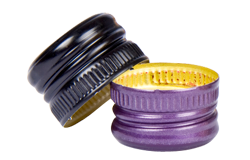The Preamble
Air is both friend and foe to wine. Oxidation is the most important factor in wine ageing. But too much oxidation can cause a loss of colour, flavour and aroma. Winemakers are trying to find that delicate balance. But there’s more at work here—consumer perception.
For centuries wines have been sealed with corks and the movement to other closures has been fraught with misconception and prejudice. Screw caps were invented in the 1960’s and commercialised in the 1970’s, but the perception is that their use is limited to cheap wines. I’ll add this, how many bad wines have you had that were sealed with a cork? For me, the closure issue is not that simple. Read on to review both sides of the debate.
Which is better: natural cork, screw caps or synthetic cork?
Wine bottles are sealed primarily in three ways—natural corks, synthetic corks or screw caps. Each side has its advocates and detractors. Based on research studies and wine experts’ judgments that I’ve read up here are some advantages and disadvantages of different types of wine closures:
Natural Corks:

Pros
• Centuries-old tradition with well-known characteristics established through centuries of experience
• Romantic notion of the pulling the cork out
• Traditionalists claim that corks allow healthy amount of gas exchange to create flavourful wine
• Cork is a sustainable, organic product
Cons
• Cork is naturally porous and thus can be inconsistent
• Because of the use of the chemical trichloroanisole (TCA) for sterilisation of the cork, there is a chance of TCA taint
• There are claims that good sources cork resources are dwindling
• Cost more
Screw Caps (Stelvin Closure):

Pros
• Easily removed
• Less chance that wines will be “corked” and probably will result in fewer tainted wines
• Don’t have to worry about storing wine on its side, so the cork doesn’t dry out
• Less expensive thank cork
Cons
• Some say screw caps suffocate to wines
• The long-term effects of the chemical compounds in the various screw cap configurations are an unknown
• There are still concerns about long-term ageing (ageing for decades)
• They suffer the stigma of being associated with inexpensive wines
• The romance of the pop is gone
• You look silly smelly the cap
Synthetic Corks:

Pros
• Consistent production – little to no variation in product
• Don’t have to worry about storing wine on its side, so the cork doesn’t dry out
Cons
• Considered expensive and unpopular with consumers
• Many synthetic corks let too much air into the wine bottle
• Sometimes difficult to remove from the bottle, and to re-cork the bottle
Some Interesting Numbers:
• It’s estimated that about 10% of the wine in the world is now closed with non-cork closures
• Depending on the source, cork taint (from TCA or just a poor cork) ranges from 1% to 10%
• There is a study currently being conducted at the University of Southern California Davis on 600 bottles of Sauvignon Blanc with the 3 closures (it will be interesting to follow the findings)
My Take
The days of associating screw caps with inexpensive wines should be over—or at least coming to an end. More and more quality (and expensive) wines are now being sealed with screw caps (and plenty of bad wines are still being sealed with cork). And to that end, from what I’ve read, screw-capped wines do evolve, just at a slower rate.
These days we’re seeing more vintners switching to screwcaps and other closures to ensure the quality of their wines and reduce the possibility of contamination with TCA.
Most of the wine produced in the world is made to be drunk within 1-3 years of bottling. I’m okay with buying wines with alternative closures for those “drink now” wines. But for wine, that I plan on ageing, I’m going with cork (for now).
Best of all, for screw caps, how many times have you been stuck without a corkscrew or broken a cork? And at the end of the day, it’s your choice. What I’m saying is that your choice should be made on what’s inside the bottle, not how it’s closed/sealed.
